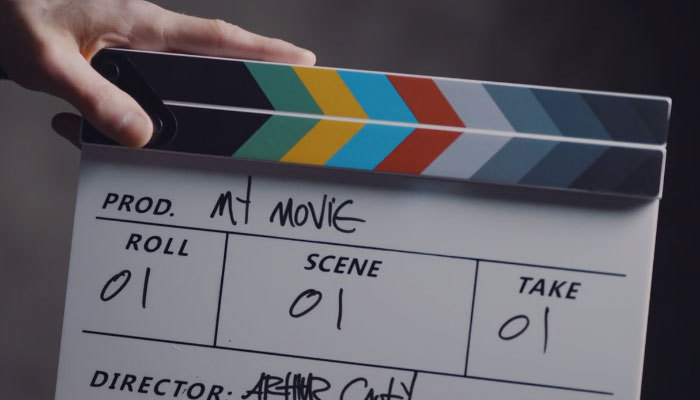Today we’re talking with Kelly Matsumoto, ACE and Dylan Highsmith about editing Fast X.
Dylan has worked his way up, mainly as a VFX Editor, including on Fast 5. And has been an editor on Fast and Furious 6, Furious 7, The Fate of the Furious, and Fast 9. He’s also edited Pacific Rim: Uprising, and Star Trek Beyond.
Kelly’s experience with the Fast series goes back to before 2006 with The Fast and the Furious: Tokyo Drift. Also, Fast Five, Fast and Furious 6, and Fast 9. Kelly’s other credits include The Meg, Star Trek Beyond, The Mummy, The Mummy Returns, The Mummy: Tomb of the Dragon Emperor, and Van Helsing among others.
Art of the Cut: FAST X
Kelly and Dylan, it’s so good to have you on Art of the Cut. You’ve both been on before we’re missing a couple of people, and I was wondering if you could fill me in on who we don’t have on the call right now.MATSUMOTO: So, we had Laura Yanovich and Corbin Mehl. We’ve worked with them a lot in the past. Corbin was our visual effects editor on F9: The Fast Saga. Laura has been a first with us since Fast & Furious Six, I think. We moved them up on this show to be editors. They made a lot of great contributions on this one.
Fantastic. I'm glad we chatted about them. We're going to stick with the two people that we do have. What fast movie is this for you, Kelly?MATSUMOTO: I was on 3, 5, 6, 9, and 10. So this is my fifth one.
What about you, Dylan?HIGHSMITH: This is my sixth one.
I want to start with the opening pre-title sequence. It seemed a good way for the fans to get back into this franchise that they love so much. Can somebody talk about that? What happened before the titles happened?HIGHSMITH: So that idea came pretty early on. It was one of the very first things we centered the movie around, even back into early pre-production. That was going to be the ‘in’ for the audience to introduce the new antagonist, Dante, through the lens of Fast Five.
So, we have an awesome archival team at Universal, led by Bill Paxton – not the actor. We knew we were going to be revisiting Fast Five very early in the process on this. So one of the first things we did was to have Universal Archives pull up all of the dailies to recreate that sequence from a different perspective.
It went through a lot of different iterations, but it was always going to be the Rashomon idea of let’s see the most iconic scene in the franchise through the eyes of the bad guys, or through the other side.
While the rest of the film is shot digitally, we shot this sequence on film so that the new pieces would match into the old. We really designed that around, “How do we reconstruct this scene so everybody that’s a fan of the series – who’s seen it a thousand times before – sees it fresh?”
We actually took a lot of the daily shots and then with Peter Chiang, who was our Visual Effects Supervisor, we put them through motion tracking so that we could put Jason Momoa into existing shots that were shot on the bridge in Fast Five and seamlessly integrate that. That was a big endeavor and probably one of the earliest endeavors we started on this project.
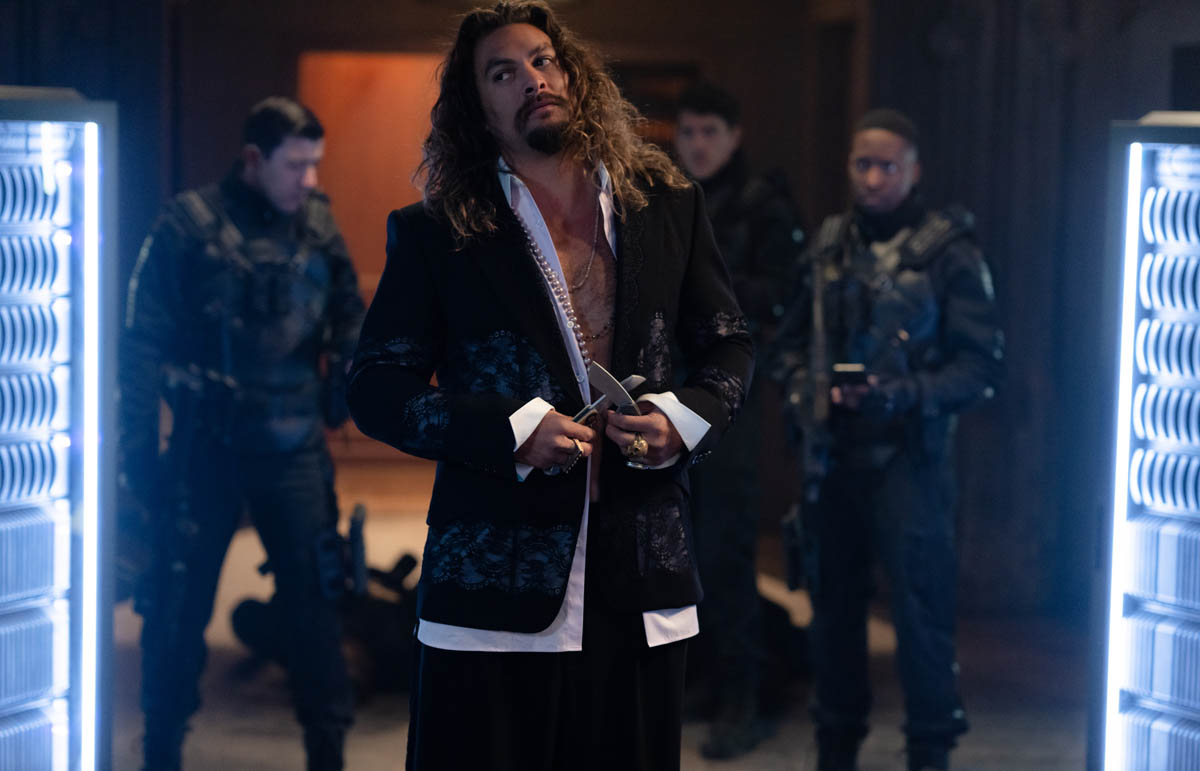
MATSUMOTO: I think you take it case by case. Laura [Yanovich] cut that scene. She did a perfect job on it. For me, in a dialogue scene you’re looking for the drama of the moment – how somebody reacts to the dialogue versus what they’re saying. Do you need a reaction? For the big screen, it’s great to be able to use wider shots so it doesn’t feel claustrophobic and to add scope. I know I enjoy seeing the locations, sets and interactions between characters in films. Then it’s good to go in for close ups to hit moments, make it dramatic, and catch the subtle reaction, but it’s not really a formula. Maybe you’ll start with a wide to acclimate yourself to the geography but then as you get into it, there’s a flow and a pace.
HIGHSMITH: I think it’s important in a film like this – especially in something that’s an ensemble - where so much of these movies are about the relationships between these characters. When you can show how they share a frame versus when you can show they’re reacting to what the other person’s saying is such an integral part of how you connect these characters together.
When Han and Dom share a frame you get to show they’re equal or sharing this moment or they’re toasting, versus when they’re listening it’s more about the character who is on screen.
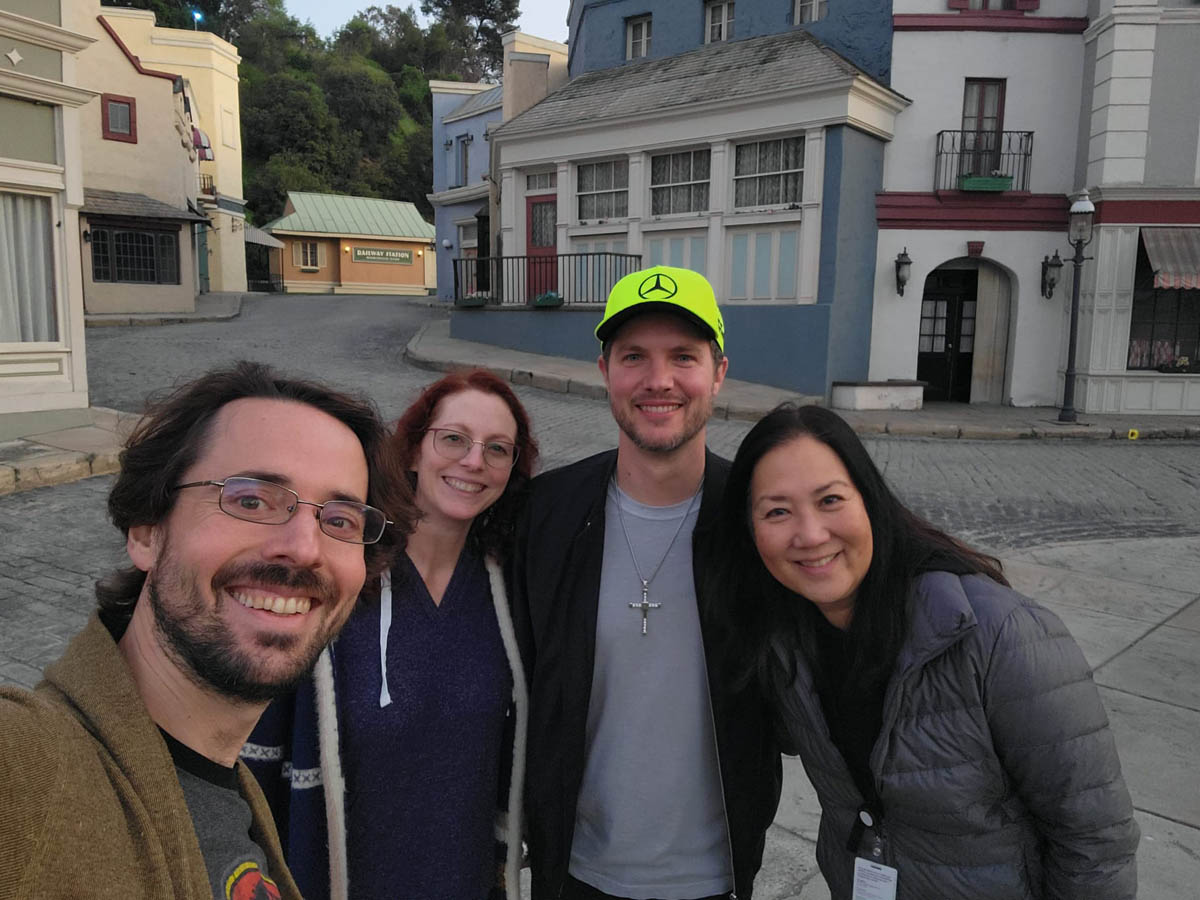
FAST X Editing team
There’s great action sequences, but then there’s a lovely scene with Abuelita – Rita Moreno’s character – where everybody’s having a meal together outside. Those dialogue scenes are also paced-up. They felt like they were active, fun, and maintained the energy even through the dialogue. Can you talk about what your choices would have been if the scene had been in a different movie? Would the pace have been different?HIGHSMITH: There’s a lot going on at the beginning. There’s a lot of characters to catch up to – that’s one of the most important functions of those barbeque scenes. It was a choice early on, because normally those scenes happen at the end of the film. This starts the movie.
Structurally, this is a reverse Fast & Furious movie. It starts with the barbeque and then ends with the team all separate. That scene is all about just getting to see them – almost for one of the last times in the film – all together. How soon can you get across to the audience the feeling of comradery, family, and their relations without slowing the movie down?
The first action sequence is late, because there are a lot of character scenes we hit before we get to Rome, which is the first action set piece that starts off the film. How do we not shortchange these scenes? How do we get the essence of them, without letting them slow down the movie? In another movie, that might be a much longer dialogue scene.
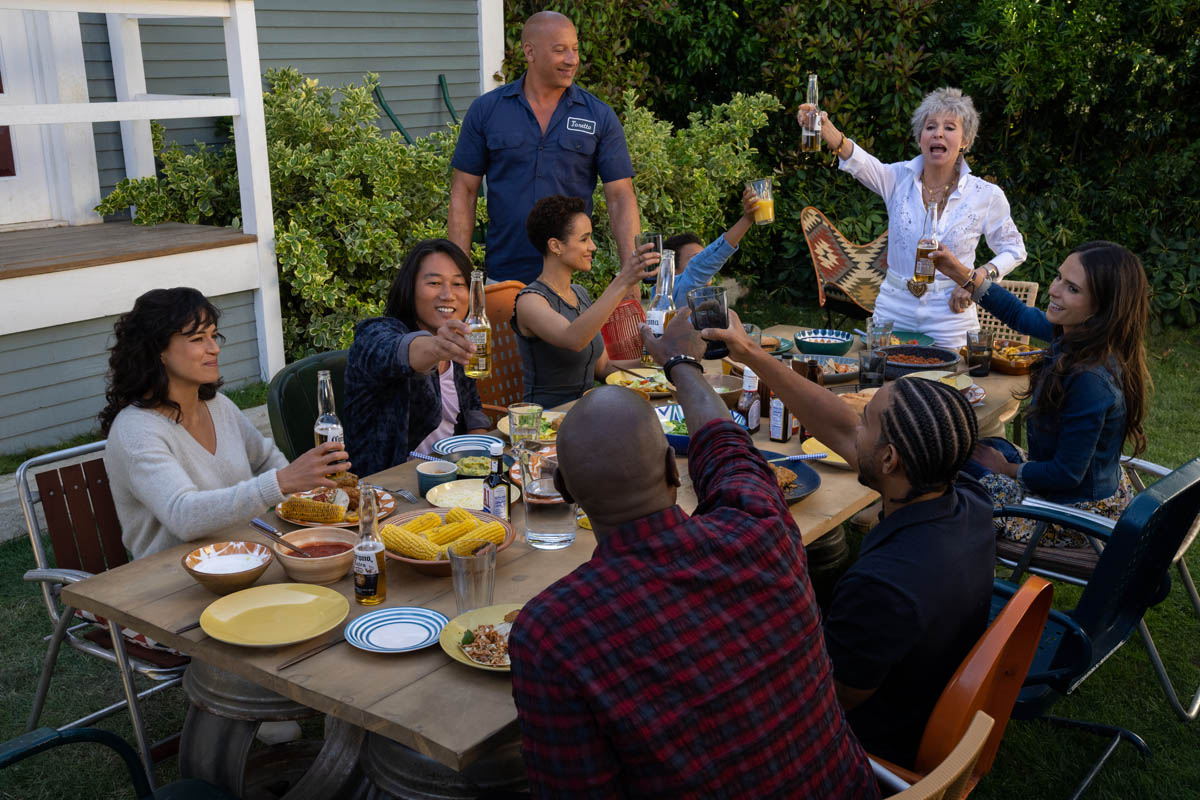
MATSUMOTO: It’s tricky on this movie. There were a couple of extra scenes, and we really tried to figure out the pacing to get to Rome without – like Dylan said – shortchanging it, because you want everybody to be happy and to satisfy the fans. I really like the barbeque scenes because the family’s all together. It’s fun. But you’re setting up a lot. So, you have to pull back and maybe even pace it quicker. Cut out some moments. Cut out some jokes. Just get to it, so that people aren’t saying, “When are we going to get to the action scene?”
As you pointed out, it’s a reverse of the way these Fast movies are laid out usually. If this scene had played at the end of the movie, it might have even been paced differently than if the same scene played at the beginning of the movie.HIGHSMITH: Oh, absolutely.
Where a scene sits in a movie depends a lot on how it’s paced. So, they head off to Rome. You’ve got a bunch of different characters that you’re trying to juggle, a bunch of different storylines in this Rome chase sequence. Did that end up being intercut the way it was scripted?HIGHSMITH: With all major action set pieces you script it one way, you previz one way, and you end up somewhere completely different. The broad strokes of that scene didn’t change from how it was scripted, but we did adjust the intercutting of how long you’re away from each character. You have to keep tracking how long you’re missing Dante/Jason Momoa or how long you’re away from Dom and Letty.
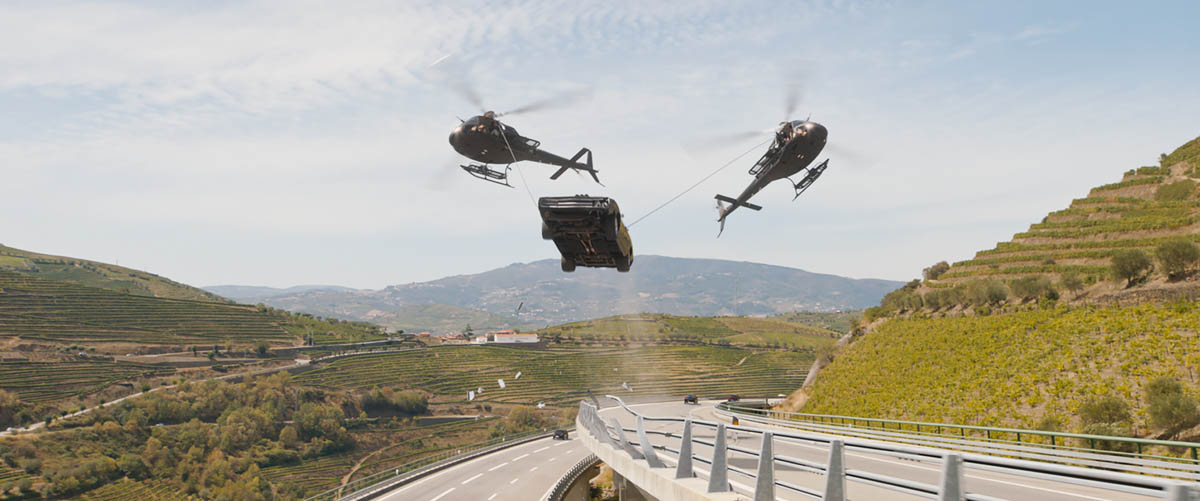
The other tricky thing with this is how much you’re going to push believability and reality. There’s an added layer of how long the bomb is rolling. How long have you been with other characters that have less urgency or are just talking? How long are you with Roman and Tej in the sewers? Is the audience going to start thinking – when you come back to the bomb – “Oh crap, the bomb was rolling that long?” So, it felt like a juggling act the whole way through with a literal ball.
Stunts are usually done for just a short moment of time in a sequence. Let’s talk about getting in and out of some of those stunts that could only have a useful life of a few frames, or a second or two. Can you talk about that idea of, “Oh before you see this, there’s something you can’t show”?HIGHSMITH: The stunt team on these are incredible. The second unit was split between Spiro Razatos, who shot the Rome sequence, and Alexander Witt, who shot the third act. They engineered an actual rolling ball that was on a wire/gyroscope that could smash through things.
It’s incredible what they can do, but it does also limit how many frames you can be on – e.g., at that point the cars aren’t up to speed, can we get an extra frame just so we can settle on that shot for more? Do you believe that, or do you feel the car’s slowing down? Visual effects help with that to some extent.
A lot of it is also just double, triple, quadrupling up the action so that you get a sense of each beat being bigger than it is. Can you get away with a triple cut on that impact? Can you get away with a quadruple cut? Is that making the sequence messy or disorienting? Is it actually helping the visceral energy of the impact?

MATSUMOTO: It’s usually a different camera angle on the stunt. Usually when they do the stunt, the car is destroyed. After that, you’re dealing with another type of car that you’ll have to maybe cover or change a little bit with visual effects. But they’ll do the stunt practically with a real car, so then you’re trying to get different angles. There’s a lot of different cameras on the one stunt.
The listening audience won’t be able to see this, but I wanted to play a clip for you that I have. Maybe it would refresh your memory about the tricks or difficulties in cutting a scene like this. I want to share my screen and then show this. Here we go. This scene with Letty, through the streets of Rome. Can you talk me through this?HIGHSMITH: This is actually a great scene to discuss, especially with the stunts and the question you brought up. For example, look at this specific gag of how this SUV explodes in the air, then rolls to the edge, and the bomb stops. There’s no way to do that with special effects all in one.
So, there’s one setup where they just started the fire under the car, which is just to get him jumping out and the initial explosion. Then there’s another set up that is all about the launch of getting the explosion big at the beginning and getting that car as high in the air as possible with as much throw as possible. Then there is a separate rig that they set up, which is just the rolling of it -
There's an amazing shot where it's rolling and Letty’s - the stunt person - is alongside it.HIGHSMITH: So that’s from the initial one, which is just all about getting air, getting big, and getting that impact. It’s a shame, because we could only use either Letty or Momoa on that buy – with both of them it’s too long to wait on the shot – but both of them go by as that car is exploding in the background.
That stunt was actually tricky because you have to merge all of these different stunt interactions, so it feels like one seamless gag. There’s actually one where it’s only exploding. There’s one that’s just rolling. There’s one that’s just coming to the edge.
This shot that you’re parked on is the stitch between the stunt, where it’s flying up in the air and where it’s rolling. This was important for sound in the mix stages, because when you’re on Dom that’s where you need to sell the impact that it’s hit. After that it goes into a roll and stops.
There’s great angles too. I’m showing a shot from very high up, looking down at a beautiful Roman street. You’ve also got a variety of shots that they’re giving you too.MATSUMOTO: Drone footage has really changed things in the last film or two. We’d get these incredible shots with the helicopters too—Fred North is the amazing pilot who’s been on many of the FAST films and gets awesome shots. And then the drone shots added even more scope and variety.
Yeah, I’m just going to play the last couple of seconds here.HIGHSMITH: This is one of my favorite gags.
That’s a bunch of edits right there. You might think that’s two edits but that was about five cuts as she preps to jump over that obstacle.HIGHSMITH: I think this is my favorite stunt in the whole movie. It is so simple. The motorcycle driver who pulled this off is one of only two guys in the world who can do this type of gag. They did it practically. Everything has to be built up around this.
We create the frenetic energy going into that. There’s obviously her, and then you have to clock Dante – see that he can create this obstacle. Then him kicking it, it falling over, her tracking that happening, slamming on the brakes, and then getting ready that she’s going to go over it.
She’s not going to let this stop her. There’s a lot of shots, but each one of these shots has a meaning. Especially when you’re going through these sequences time and time again to try and get them down for time or get them down for visual effects or budgetary concerns – you’re looking at every shot saying, “Does this need to be there?”
Every shot in the sequence - even though there’s a lot of cuts - has an importance and a meaning in telling the story to build up what Letty as a character is willing to do to stay on Momoa.
You talked about first and second unit, Kelly. Talk a little bit about what it takes to manage some of these scenes when you’re dealing with first and second unit, as I’m assuming they’re coming in at different times. Do you try to edit first unit stuff knowing you’re waiting for second unit?MATSUMOTO: We usually just take the material as it comes in, since they’re shooting all over the world. They are in different time zones, so we just get everything in as soon as possible. We will manage it differently based on time.
We’ll say, “Okay, you’re going to take this action scene, and you’re going to take that action scene.” We’ll divide it broadly like that. With smaller scenes, it’s whoever’s free, and sometimes those get passed back and forth if it’s easier to work with a series of scenes that are connected or in the same reel. In general, we keep scenes with a lot of footage with the person who originally cut it because they’re more familiar with the dailies.
For the big scenes on this one - for example the Rio race – the second unit started to come in, so then I could concentrate on that. Then Dylan was on location in London when they were shooting the green screen with the cars and the principal actors. He could be on set. He would do a really quick but good pass. I could give him the framework of the cars and then just put a title card and say, “Close up, etc,” to block things out. He could be on set and get the video, cut those things in, see how they’re working, and then build it that way.
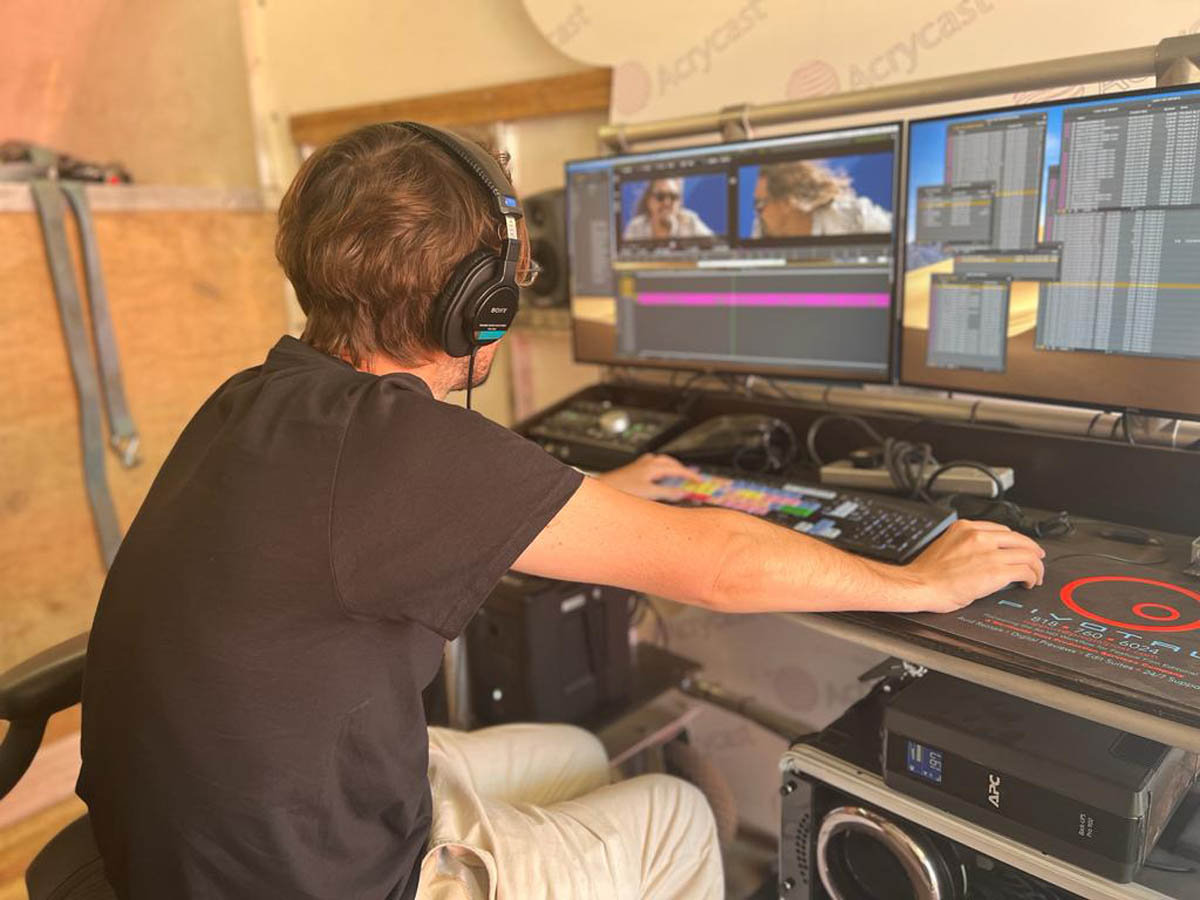
Sometimes he’d say, “Okay, Louis’s [Leterrier – the director] happy with that.” Or he could say, “I didn’t get a chance to get through those really closely. Could you look through all the takes and see if there’s a better one for this?” So, we were going back and forth on things like that. We’ve worked together a lot, so we have this shorthand on going back and forth. So, we’re doing both the first and second unit.
The bridge was a lot of second unit. We built that up together based on how the footage was coming in and based on timing.
HIGHSMITH: For the most part on these films, second unit leads first unit in shooting order and schedule. Especially with the car chases and the blue screens, because we shoot the main unit characters on blue screens in Leavesden in London. The lighting of those needs to match with what was shot in the second unit - be it Rome, Turin, or Portugal.
They’ll shoot array plates for all the driving sequences that they got on the day. Sometimes it’s sunny, sometimes it’s bright, sometimes it’s dappled lighting, sometimes it’s all over the place. If you do the blue screen first, then you’re locked into a lighting that’s never going to match when you go to shoot the array plates. It’s completely different lighting. That dictates what the shooting order has to be.
So we’ll cut the second unit. Sometimes you’ve got a month between when the second unit shoots and when the first unit shoots. Sometimes you’ve got a day or a week. We say we’re a 24-hour cutting room because I’m in London with my first assistant Dillon Thomas. Kelly, Laura, and Corbin were all back in Los Angeles cutting.
When my day ends, we’re always in communication with each other. I’ll say, “Okay Kelly, here’s what I did today.” I finished my day, dailies come in LA, they pick up where they left off. Then she’s either calling or writing me an email.
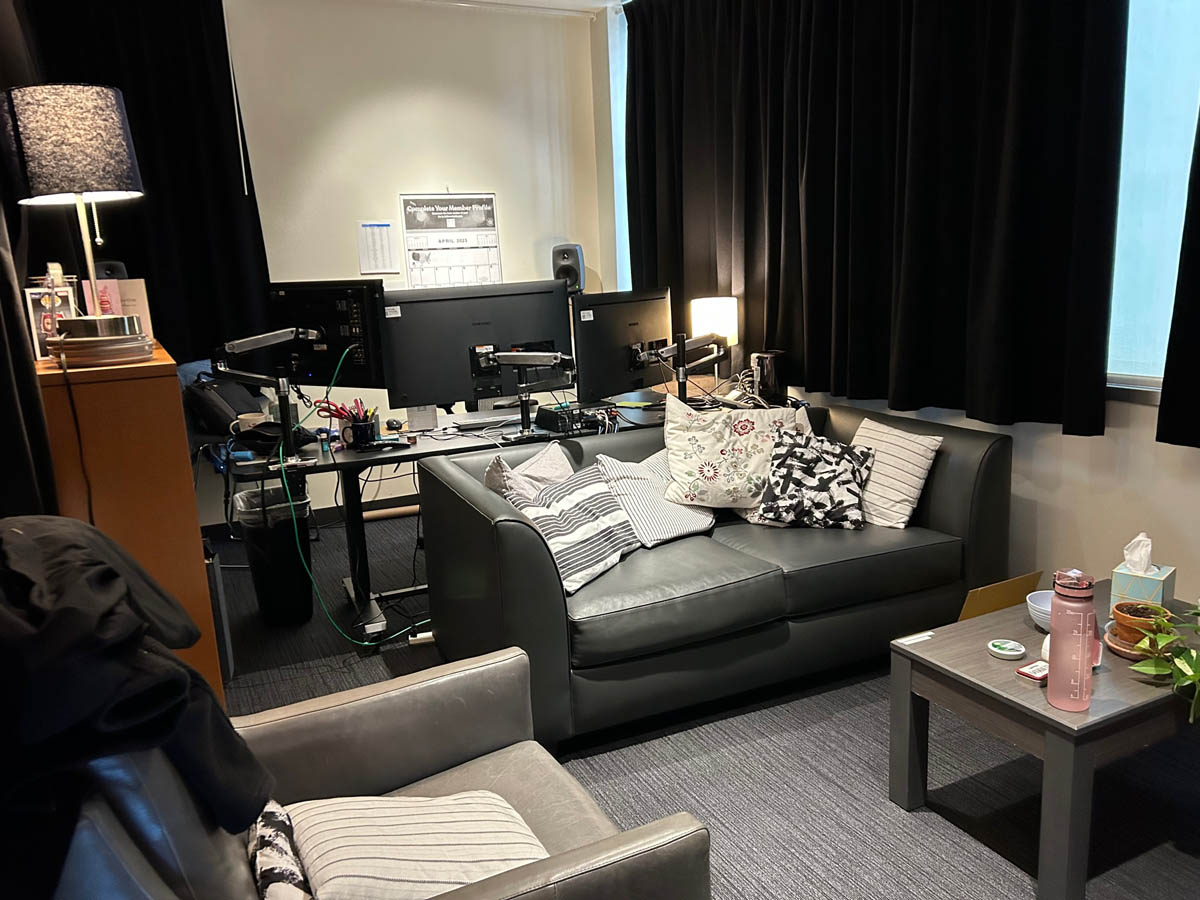
We love locators on sequences because we’re always sending sequences back and forth. It’s 80 locators of “This is where I got to here,” or “This isn’t quite right, but it’s just the idea.” It’s about maintaining that constant communication back, because it’s not just communication for all of us in editorial. It’s communication on the set.
We might be shooting a scene with the main unit, which Kelly cut the second unit for the day before. We’re on set looking at her edit as the guide for how we’re going to shoot the sequence, cover the sequence, light the sequence, and what they’re going to match the lighting to.
Her notes to me are crucial because I’m communicating to Louis, “This is the intention.” The more communication, the better.
Kelly, when you’re cutting those scenes together, are you leaving plates? Are you leaving slates? Are you mocking something together? What are you doing before the first unit is shot?MATSUMOTO: I usually put a title card in, because you’ll have two stunt-y things and you’re going to be cutting to something in between –
Dante looks over his shoulder or something.MATSUMOTO: Then they’ll do it in an interesting way, because mine is just a very basic “close-up Dante” or “shift gear” or something like that. I don’t put in a fake shot. I usually put what we want to have put in there. We’ll add the gear shifts and shots of pedals later.
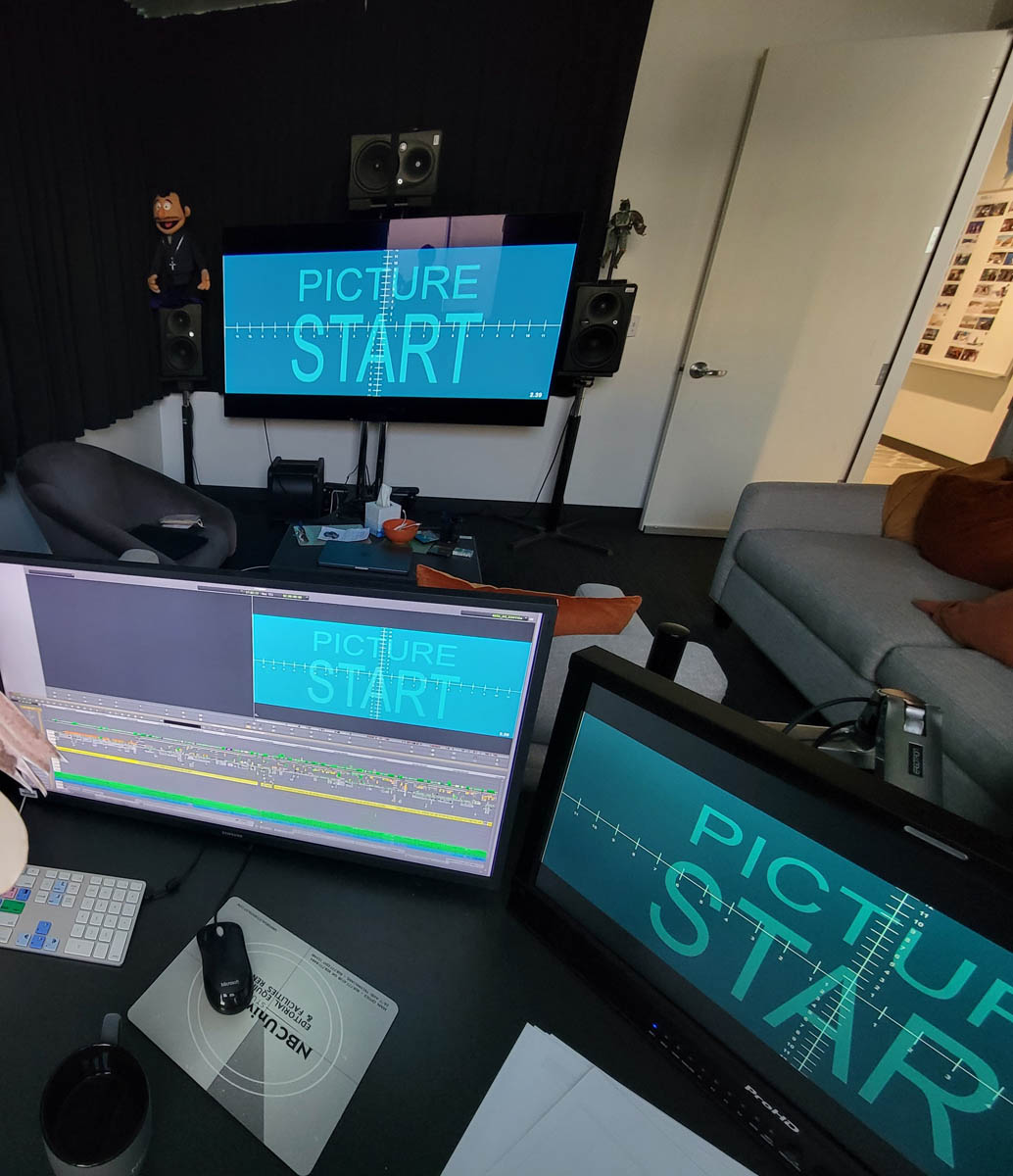
Cutting room in LA.
So, there's second unit at the beginning, and second unit after first unit-MATSUMOTO: Then what we call the splinter unit.
HIGHSMITH: We probably had 5 or 6 units shooting at any given time on this. That’s pretty common for these.
MATSUMOTO: You've done some of the gear shift directing, Dylan, when you've been over there.
HIGHSMITH: Yeah, I have. Because you’ll have second units, splinter units, units that are-
MATSUMOTO: Second-second units.
HIGHSMITH: You’ll have fight units for the fight sequences that will be going on at the same time as two separate second units. They might also be shooting an insert unit. Sometimes there’s separate units that are shooting car inserts versus the actual inserts.
There might be a C cam that breaks away from the main unit to shoot something else on another stage. When these get up to speed, there’s a sheer amount of dailies coming in from different units. There are visual effects units too. So, there’s so much coming in, which is why it’s critical for us to have the awesome team that we have. Everybody’s cutting up to the camera as much as possible. All of the assistants are managing, organizing, and preparing this for us.
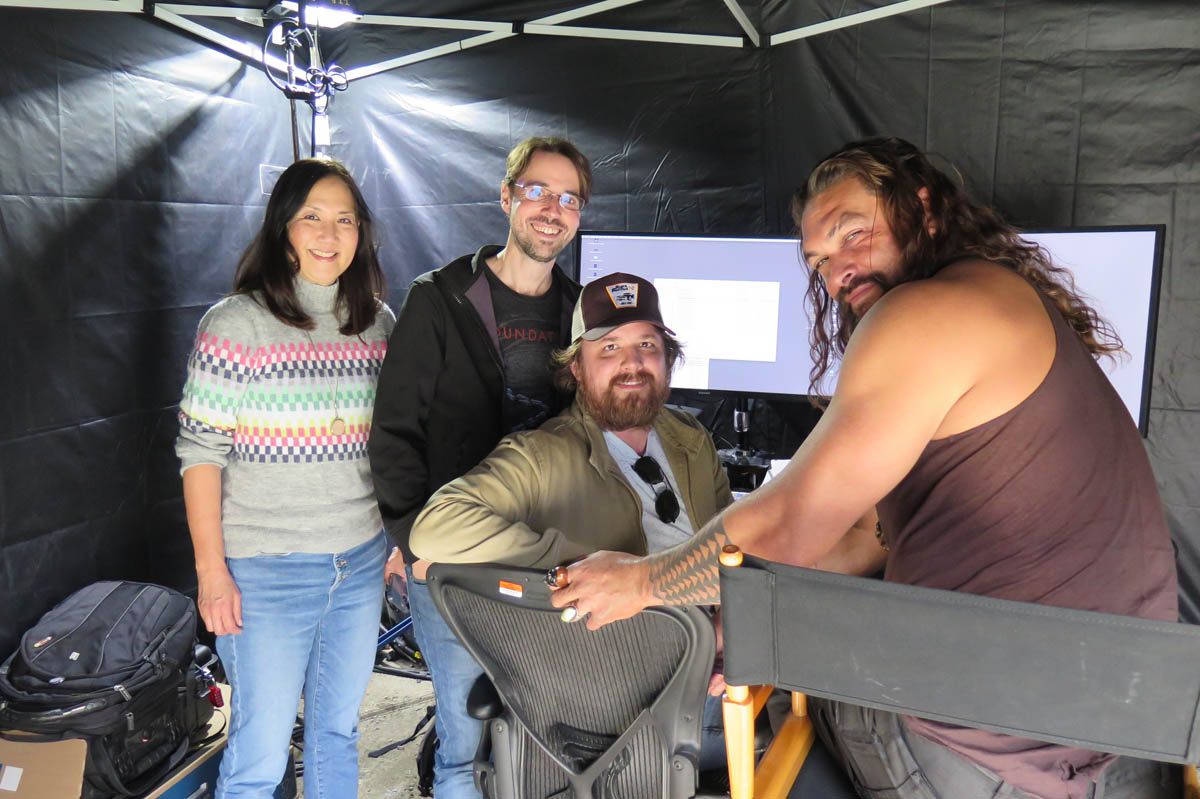
MATSUMOTO: It’s really the assistants. They’re amazing, awesome, and organized. We have those little Post-Its – I think I talked about them one time on the podcast – for the bins that they knew shot.
HIGHSMITH: We have a good system of checks and double-checks for every day. They’ll build KEM rolls by unit. So, you can go through and see, “Okay, there’s six units.”
I like to watch them in shoot order personally, so if the director says, “Oh hey, I shot that early in the day,” I know what he’s talking about. I know what his day was like. That’s always going to be a preference for him.
So, if we have 5 units going, I’ll have 5 different sequences. I know what each unit shot. I can scrub through that.
The assistants go through and mark everything up. They build all the bins. We’ve got a whole folder structure set up where you move things into cut. They’ll bring things back up into new and then they flag them - like Kelly was saying - with Post-It notes. So, you can see, within this giant bin of stuff, that they might have been shooting on the scene for a week. There’s a clear description of, “This setup is new or that setup is new.”
MATSUMOTO: Or if even there was a take that we didn’t have – it got missed – this will flag that one little shot is new, which we didn’t have before.
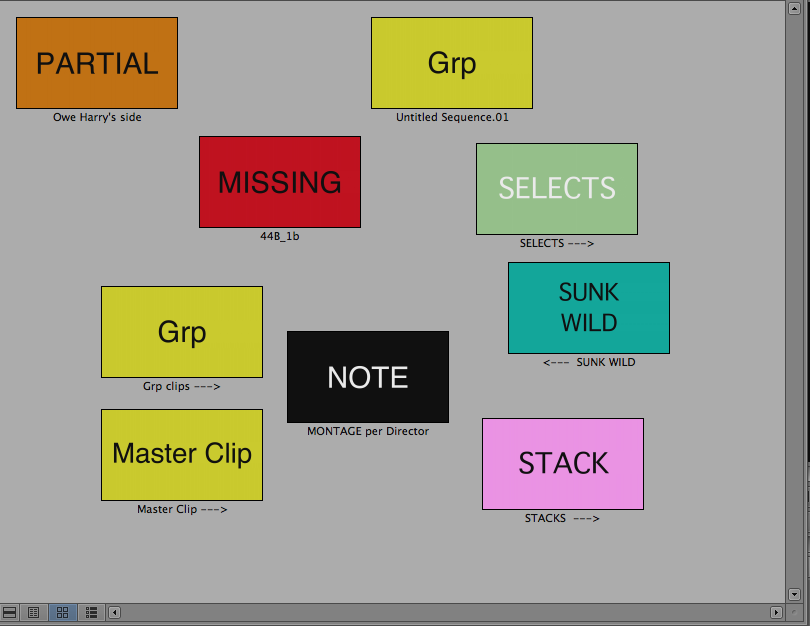
MATSUMOTO: I learned this from working with Tom Cross because he did these digital Post-Its. He told me he learned it from somebody else.
If you have your bin, then we have a group clip at the top of the shot – each clip is broken down by camera underneath it. We do it by scene order – not shot order – so there’s a beginning, middle, and end. Sometimes the bins are really big, so they will be separated by part one, part two, and part three.
Then to the right of the clip, there will be this digital Post-It that will say the clip name and it will have the cameras – that’s where they’ll put additional notes in a different color. It could say, “New shot,” or, “Missing shot.” You can just get rid of the Post-It as you’re working in the bin.
So the next time if they go in again and put something else in, then that shows up in your bin. We each have our own bin, since we work separately in London and in LA, which we keep until we merge.
HIGHSMITH: It’s great to see it in thumbnail view. Right next to the thumbnail, there’s a big bright Post-It that says, “New,” with an arrow. So, you can say, “Oh this set up is available.” Or even when you have group clips that stacks, if randomly B Cam is missing, it’s nice to see a note that says, “B cam was NG on this tape.” It's a great visual thing so you don’t say, “Oh was there not a B on take 12?”
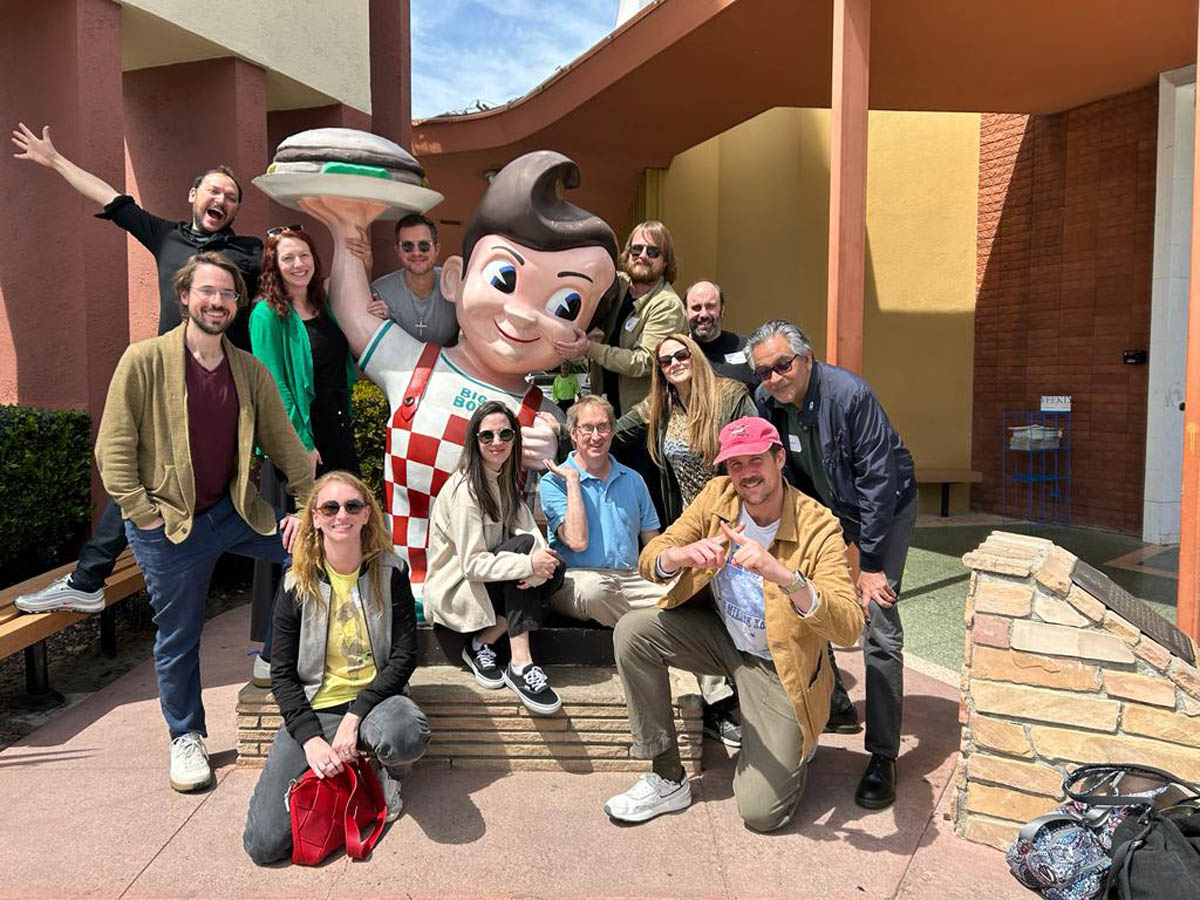
HIGHSMITH: Especially since we do the 24-hour cutting room. My bins might be prepped by Los Angeles or vice versa. The people who prep the bins might be asleep by the time I’m actually working on them.
It’s great that if I come in at the beginning of my day – and they’ve worked on prepping this scene bin all night – that there’s no questions. Everything is easily spelled out – “Oh that’s missing. That’s at 48fps. That’s new.” It’s a dummy proof system.
Jason Momoa’s character is played super big and fun. Is that a thing you needed to play with temperature? Did he give you options that you then had to regulate throughout the show?HIGHSMITH: He’s talked about it in interviews a lot. He’s an 11 in this movie all the way through. He gave us from a 20 all the way to a 5. It was always a calibration. We wanted to end up at that sweet spot of an 11.
He definitely gave us a big range. It’s finding where is too much versus where is not enough. He needs to be big. If he doesn’t work, the movie doesn’t work.
MATSUMOTO: We were really struggling with that. We played with it between the different previews. First, we put everything in and then that was too much. So then, we took everything out, based on the notes. Then it was too dull and flat. You have to put some back in to make it so he’s interesting and fun. You don’t want to make it so you’re making fun of the movie or his character too much or too little.
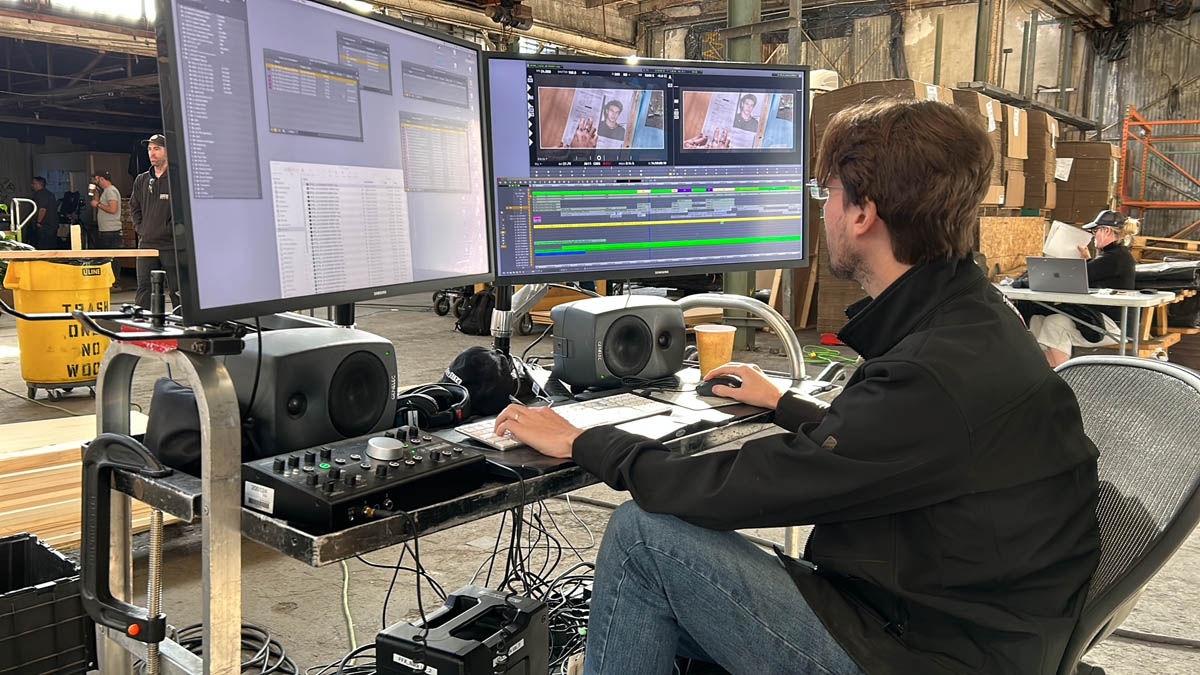
We’re not trying to mock him. We need to take him seriously, and yet have him have a good personality.
There is a ton of camera movement – following, chases, and that kind of camera movement. Even in a scene that is more still, this director seems to like camera movement. What kind of challenges does that have for you? Even in terms of setting up a bin – what thumbnail do you use when the shot goes from here to over there?HIGHSMITH: Sometimes we’ll thumbnail it through the sequence so you can see the movement of that setup across the takes. We’ll try to convey that instant idea of, “Oh okay, that’s the shot that does all of that motion.”
Louis definitely likes to move the camera. I think it’s a lot of fun. It adds a lot of kinetic energy. But it’s also a challenge. Corbin [Mehl – editor] could definitely speak to this more than the two of us.
There’s a scene early on where the camera’s rotating between Brie [Larson – ‘Tess’] and Alan Ritchson [‘Aimes’] in the agency headquarters. The camera starts moving. It doesn’t stop. With moving cameras, it’s always a challenge in terms of when to cut to a less moving camera or when to cut to a static camera or when to stop. Sometimes, you have to add movement to stationary cameras to ease that in. It’s always about when works best for the scene to start the move, and when works best for the scene to stop the move.
Kelly, did you cut the hand-to-hand combat? Can you talk about how those scenes are cut? How do you handle the rhythm of the frenetic stuff compared to moments where the two people are trying to recover? How is a fight scene cut?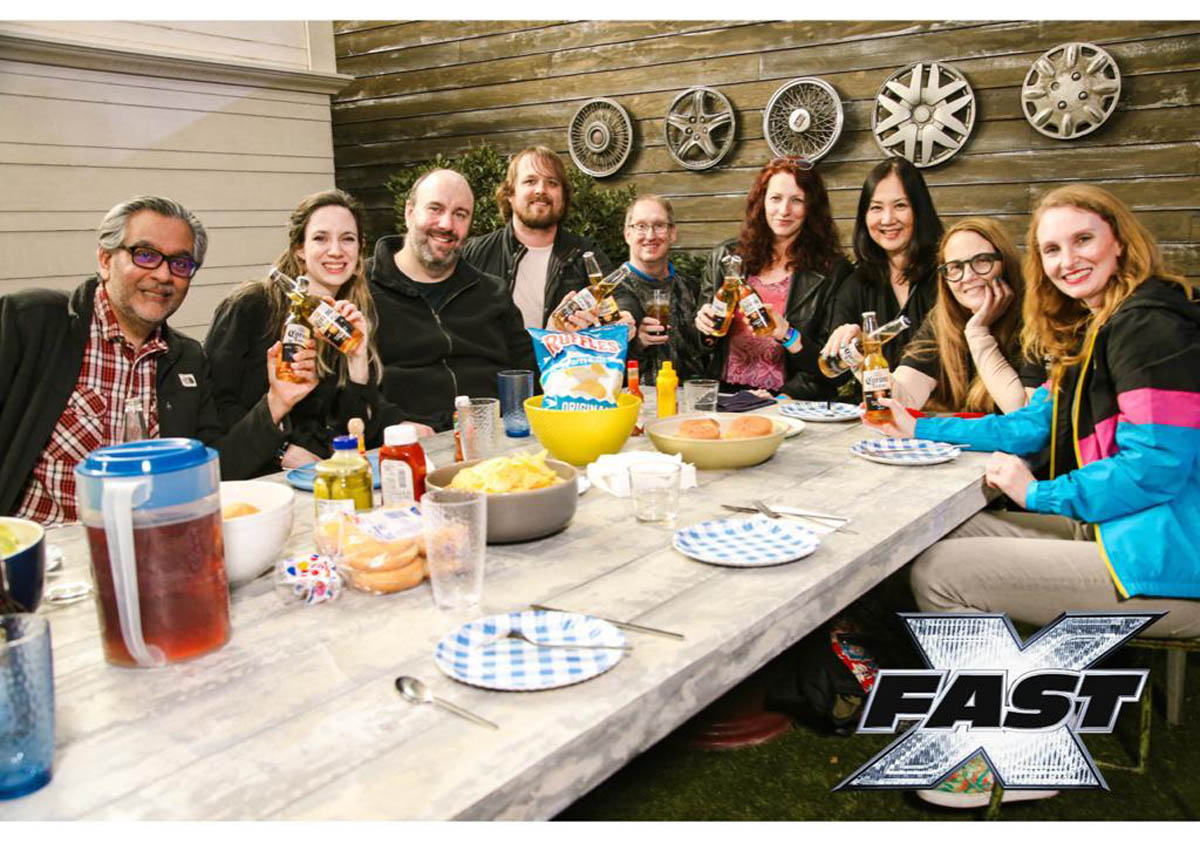
MATSUMOTO: On this one, Dylan cut the fight scenes. My favorite one was the ladies’ fight. He did a great job. But I think that’s a good one to talk about ‘the recovery’ because there were two levels of it.
Yeah, talk about that. That’s in Antarctica. Is that the one you’re talking about?HIGHSMITH: I love that fight too. There are two levels where they fight – the upper level and the bottom level. Each level has its own shape to the fight. It has an arc where you need to start it slow, because they literally crashed through a pane glass window. Then they have to recover.
All that kinetic energy you generate building to the vault through that window – which in other fights could have been the end of the fight sequence. This keeps going on the second level. You need to build to what would be a climax of an action sequence, and then start slower, get faster with your cutting, rhythms, and pacing, and then build up to an even bigger ending at the actual end of the sequence.
The stunt people are great. They give you a lot. Both Michelle [Rodriguez – ‘Letty’] and Charlize [Theron – ‘Cipher’] gave everything to that. There was a lot that we could cover on both of them, as they were doing their own stunts and hits. We weren’t as limited by how long you can be on the shot of a stunt actor. I think you’re more limited by the gags of going through the window or going from level to level.
One of the great things about editing is that movie time is not the same as real-life time. It shouldn’t be. You want to extend some moments and other moments you want to condense. I want to play this scene for you, because I did not think about this when I watched it in the movie theater, but then I watched the cut. This is the cannon car, from when they first start using cannons. The cars are about a 100 yards apart from each other, going full speed. They should connect within 2 seconds. This is 26 seconds. I want to play this for you. Talk to me about the challenge of cutting a scene where you have to extend 2 seconds to almost 30.MATSUMOTO: The thing with scenes like this – as you’ve seen in other movies with the crazy action—is some people think about the realism and some people just go for the ride. Dylan and I have talked about how we’re both the type that start counting if there’s a countdown clock, but other people don’t think about it. So we try to balance it for both types of audience members.
For most of these movies, if you just cut the stunts back-to-back it’s not as engaging as if you’re in with the characters – listening to what they’re saying, their banter, and getting the emotion of it. I think you can just say, “This was happening simultaneously,” and you don’t think about it until later.
I think people are willing to suspend a little bit of reality if people are talking, saying something emotional, or it’s funny.
There's three scenes that I wanted to talk about: 1) the car launching out of the airplane and landing on the highway, 2) the car getting harpooned by the two helicopters, and 3) the car going off the dam. It must be challenging to make those seem realistic. People must know that they can’t possibly work in real life, but they feel like they did when you’re watching the movie. What are the tricks in editing that you have to do to make it feel real?MATSUMOTO: That’s tricky. We do talk about it. We laugh about it a lot, but it feels like if you get into the moment, it seems an emotional thing.
In every movie, I can think of the moments where we said, “I don’t know. Is that going to work?”
HIGHSMITH: One of the tricks to this is to take the absurd seriously. In these moves – yes, to some extent we’re in on the joke, and we’ll comment on it – you do need to take it seriously. The characters need to take it seriously. You need to take this crazy absurd thing and play it straight.
Dom needs to be 100 percent sold that this is the crazy thing he needs to do to save his son. You need to be invested with him. If you’re with him, you’re with the gag.
Kelly, maybe you could speak to this. I was thinking about the ‘jumping off the dam’ sequence. I’ve been on those dams. There’s 15 feet of runway for that car to get up to speed. Then you’ve got a solid wall in front of you. How do you look at the footage you’ve got, the angles you’ve got, and construct a scene where the audience says, “Oh yeah, he backed up, jumped the car off the dam, and landed the car on the dam?” It all works for me, because it does, but there’s just no way.MATSUMOTO: As in all the action scenes, we try to take the footage and make the physics work as much as possible. And this is Dom. His car can do it because it defies bullets. It defies so many things. It fell out of a plane, and yet it’s still going. He can do these crazy 360 stunts and save his son. Everything adds up to it – the visual effects, the sound that makes the motor so big. Everything builds to it – his expression, his emotion. He’s got to get his son out. Hopefully adding those moments of realism and earnestness helps sell the moment.
There’s a montage I loved from when they first went to Rio. I love the rhythm of it. Can you talk to me about that Rio montage?HIGHSMITH: I’m going to give a shout out to our first assistant, Dillon Thomas, who cut that sequence. He did an awesome job. During production, Louis likes to make sizzle reels or trailers to show the crew, the studio, and the cast. It gets everybody really jazzed up. All of those fell to Dylan – we call him ‘D2’.
Okay. You're ‘D1?’HIGHSMITH: I’m ‘D1’, he’s ‘D2’. That was part of my interview process. I asked him, “Are you okay changing your name?”
He had done a lot of trailers that were heavy cut to music, which is a completely different beast. After seeing his work on those, we said, “Okay, take a run at the Rio scene.” I think we were shooting that sequence with main unit. We really needed something cut together to show the crew to get a flavor for where it was going to go from there. So we said, “Take it and run with it.”
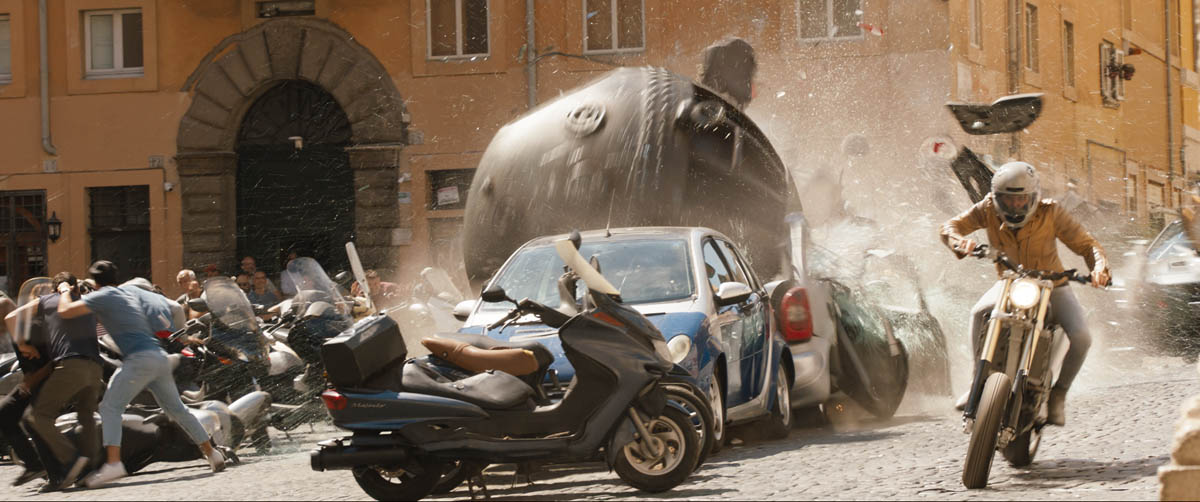
He found that song from what Universal Music provided us, and he tracked that whole thing out. It definitely evolved throughout. Then we got more units to go back and get more footage. We had a unit that went to Rio to actually shoot some big aerials.
But it all started around the song – the rhythm of that – and you build the flavor from there.
Right after the montage, they’re about to race. I love the tension building up to the race. It felt like a Western gunslinger to me as Dom and Dante prepare to race. Any thoughts on that sequence? You know the audience is waiting for it, and you could just cut it so they say they’re going to race, and then we cut to the race. But instead, there’s a sequence of anticipation, which I loved.MATSUMOTO: The one right before the starting line?
Between the guns coming out and the starting line, there's some tension and anticipation in there.MATSUMOTO: Corbin did a great cut and then it was a lot of evolving that sequence over building up the tension of the guns – drawing them, and how much to do back-and-forth.
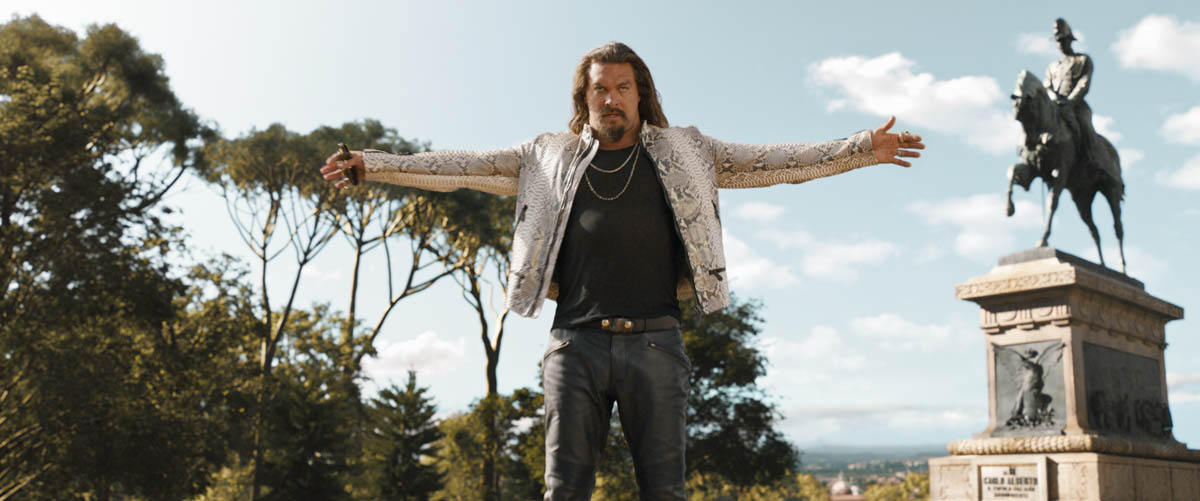
HIGHSMITH: We did a lot of work on Dante’s character specifically in that scene, as well as throughout the movie. We needed to streamline and target his motivations – e.g., what his relationship to his father was.
This is the first scene where Dom and Dante come face to face. It had to do a lot of heavy lifting for their relationship together. If what they each want isn’t clear then these two characters going head-to-head in the movie is not going to work. The scene was crucial. What is Dom’s point of view? What is Dante’s point of view? What is he there for? What are they there together to do and achieve? That all comes across in their standoff.
I think that starting bit is excellent tension building. Momoa does this great thing with his character where he starts in one tone – he’s being fun and he’s saying, “Oh black-on-black looks good.” As he pulls up to Dom, he’s just playing with him and taunting him.
Then he turns on a dime into serious. He just changes tone completely. At first, he’s talking to Dom about how much of a fan he is – “Oh, how do you do it? How do you save people?”
Then he turns and says, “How do you choose the ones you save?” That instantly cues this music-suspense-led-moment where Dom realizes there’s something else at play in this race. Then he clocks that Dante has put him up to make a choice between saving two people.
That wasn’t crystal clear in the initial version of the race. The stakes of the race were a bit muddier. At what moment does Dom realize that the bombs are under the car? He’s going to have to make that choice. Laura [Yanovich] came up with the idea of how to restructure the race to give Dom that information sooner.
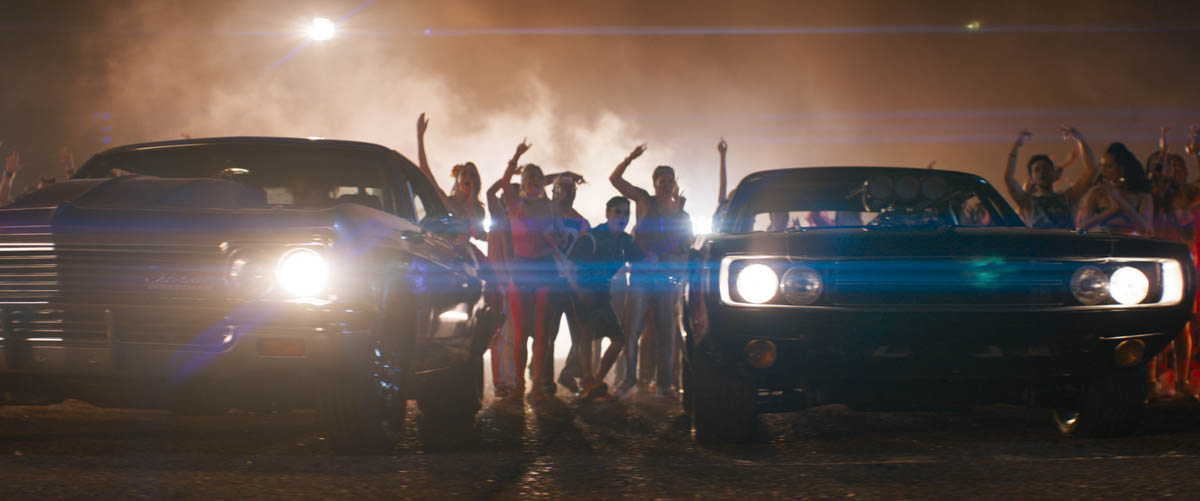
It tied more into the themes of how you choose the ones you save, what Dante’s philosophy is versus Dom’s, and gave the race a lot more tension and urgency.
Kelly, do you want to talk about how that evolved?MATSUMOTO: It’s one of my favorite things about editing. You can take something that was going in one direction and restructure it. Like Dylan said, Laura had this great idea, because the race needed to be more serious. We had to make the stakes higher.
We were able to restructure things with existing footage to create a different moment. We took the reactions and the footage we have and instead made it about these two bombs that are both going to go off and Dom choosing between the two. That’s the magic of editing for everybody. I’m sure many people have to do it on their shows.
Near the end of the movie, there’s a great jump cut section where weapons are being assembled – I think it’s in Jason Statham’s safehouse. Talk to me about the value of jump cuts – how to use them and how to make them look good.HIGHSMITH: With jump cuts, the trick is always movement. You need to get a good dynamic movement to make those work. The second trick is repetition. It’s not an innately correct edit – it always feels jarring at first.
It’s like jazz. If you play a bad note, play it again. You need to have enough movement and repetition so that you can make it work as a style as opposed to a mistake.
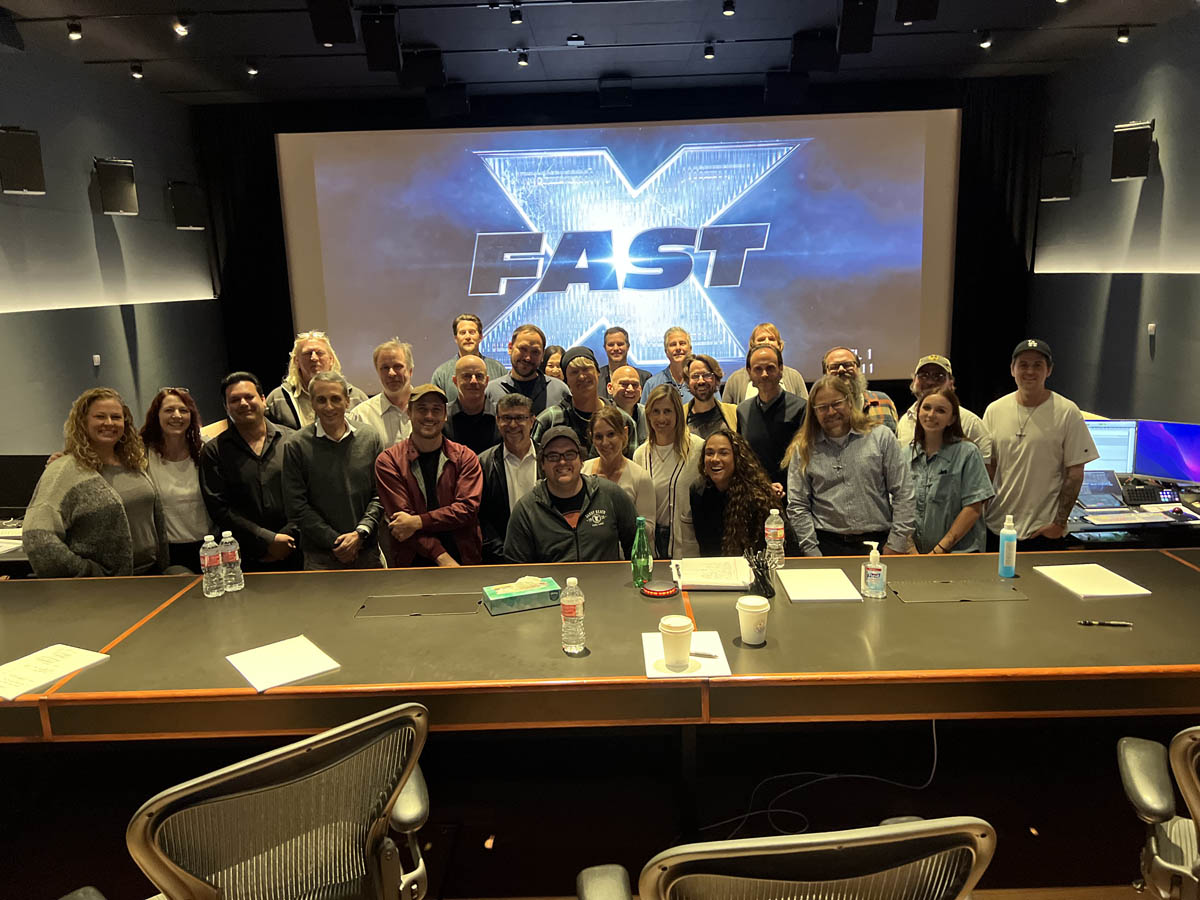
MATSUMOTO: You need good sound too. Peter Brown and Paul [Aulicino] – Assistant Supervising Sound Editor] did great with all the sound effects work to make it very satisfying and heavy.
HIGHSMITH: You do need to track them. Certain things won’t work without track visually – speed ramps, especially if you’re doing stylized ramping through a scene. You need big sharp sounds to accentuate the staccato nature of the edits. The sound must work with the picture. They’re not fighting.
Would you two want to give a shoutout to the people on your team?HIGHSMITH: We had an awesome crew on this.
I had my first assistant Dillon Thomas on location with me. Back in LA, we had Mike Azevedo and Dov Samuel. We had our second assistant Meghan Ellsworth and an awesome visual effects editorial team – Kimberly Huston, Steve Ngo, Ben Howdeshell, Sharon Smith-Holley, John P. Husky, Delaney Del Vecchio, Paul Hart.
MATSUMOTO: Li Li, for a short while.

MATSUMOTO: They were all part of the same team. Then we had Paul Rabjohns, a fantastic music editor who not only does things with temp but writes and makes his own bridges and songs himself.
There's a lot of music in this movie.MATSUMOTO: Lots. Then as we said, we had Peter Brown and Paul Aulicino and their awesome crew. We had mixers Jon Taylor and Frank A. Montaño. We had our great PAs Elaina Koutras, who helped us from the beginning, and then Leyana Montaño who helped us once we got on the mixing stage. And again, Corbin Mehl and Laura Yanovich had such amazing contributions.
HIGHSMITH: In London, I also had Lucy Heyworth, Hugo Cantrell, and Aaliya Nazerali as our local crew. All awesome.
Kelly and Dylan, thank you so much for joining me on Art of the Cut today.
